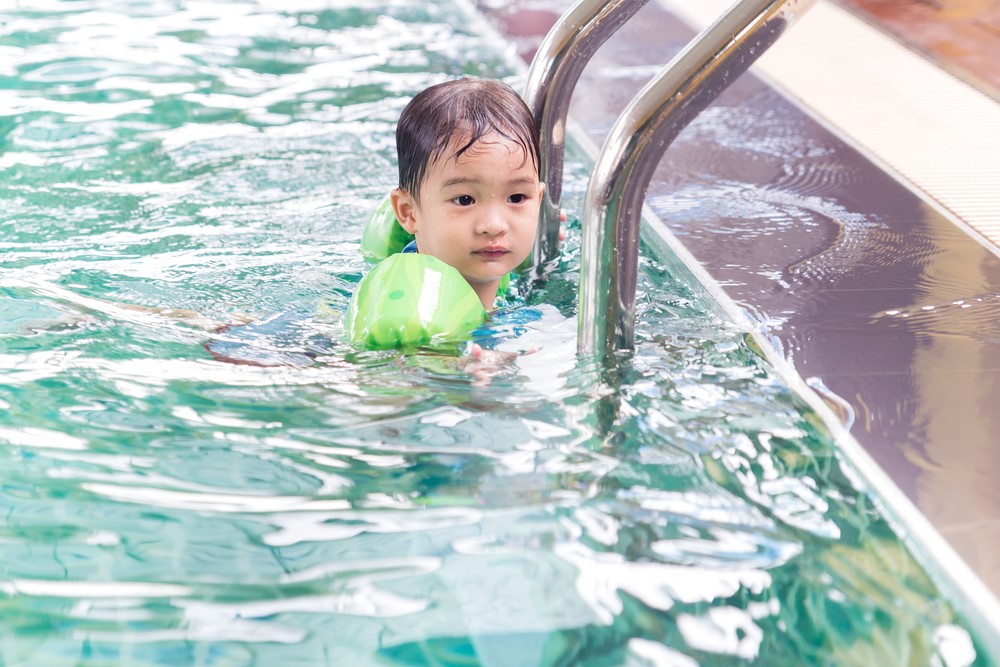By Guest Blogger, Cassie Brewer (wise words from across the pond).
Summer is the time for lots of outdoor fun, but, according to the 2007 Safe Kids U. S. Summer Safety Ranking Report published by Safe Kids Worldwide, it is also “trauma season.” With school dismissed and kids playing outdoors and in the water, summer is the prime time for injuries and accidents.
The Safe Kids Worldwide report covered numerous years of data regarding accidents and fatalities during the summer, and the findings would make any parent double-check and reevaluate safety measures for typical summer activities. According to the report, more than 2.4 million children under age 14 were seen in the emergency room during the summer of 2004 for “unintentional injuries.” Of those children, more than 2,000 died of injuries sustained from drowning, bicycle accidents, from falls, in motor vehicle accidents or as pedestrians.
No parent can keep their children safe 100 percent of the time. Sometimes accidents happen that we are unable to prevent. However, parents must be vigilant in ensuring that children know key summer safety rules and in providing the tools and safety measures needed to keep kids protected and safe.

Water Safety:
During the warm months of summer, most families head for the pool, the beach or the waterpark. But water safety is imperative for a child’s safety. According to the Centers for Disease Control, “drownings are the leading cause of injury death for young children ages 1 to 4, and three children die every day as a result of drowning.”
Make sure gates to pools are locked so that young children cannot wander into the pool area. If there is a sliding door that leads from a home to the backyard pool, keep it locked with a bolt high enough so a child may not reach it. Kids should never be unsupervised near water.
The CDC advises that parents learn cardiopulmonary resuscitation (CPR) and that children should learn how to swim. Swimming is one of the most important—and lifesaving—skills a child can master.

Bike Safety:
Kids love to get on their bikes and ride through the neighbourhood with friends or family. Riding a bike is great exercise and a fantastic way for kids to get outside and explore. However, kids must learn the rules of the road, and they need to understand guidelines for street—and bike—safety. Children should always wear a helmet and should never ride alone.
According to Kidshealth.org, children should also wear bright colours or add reflectors to their bike to be more visible to cars…and don’t let children wear headphones while riding!
Riding at night also should be avoided. And, if older kids are allowed to ride in the street, parents should teach the basics of the road…stopping at stop signs, looking both ways and obeying traffic.
For more helpful information on bike safety, check out this post from Biking Expert.

Falls and Hazards
Children fall down…it’s the nature of being young and in a hurry. Some falls, though, can be severe. Children who are naturally curious—and crafty climbers—might try scurrying up a tree or a bookcase. While the tree might hold their weight, a bookcase won’t. Teach kids what is safe to climb and what isn’t. Kids should know that climbing up on furniture and television stands, high ladders or other high places are dangerous and can lead to serious injury. In addition, the Mayo Clinic advises parents to lock windows and install gates to block off staircases…and children should be kept from accessing high porches, balconies or fire escapes.
Street Smarts:
Keep kids safe at home and away from the street and oncoming cars by teaching street smarts. Children should look both ways before crossing a street. If a ball rolls into the road, they should have an adult retrieve it. Children should also be instructed not to play in the street or skateboard in the street.
Pets are also part of street smarts. Kids might love fluffy dogs, but they should absolutely not approach a strange dog without asking an owner’s permission…and they also shouldn’t talk to a stranger (with or without a dog)! Children also must be advised to never pet or approach a stray animal.
Summer safety begins at home. Make sure your kids have the tools and knowledge they need to stay safe and to have a summer free from hospitals and emergency rooms.


